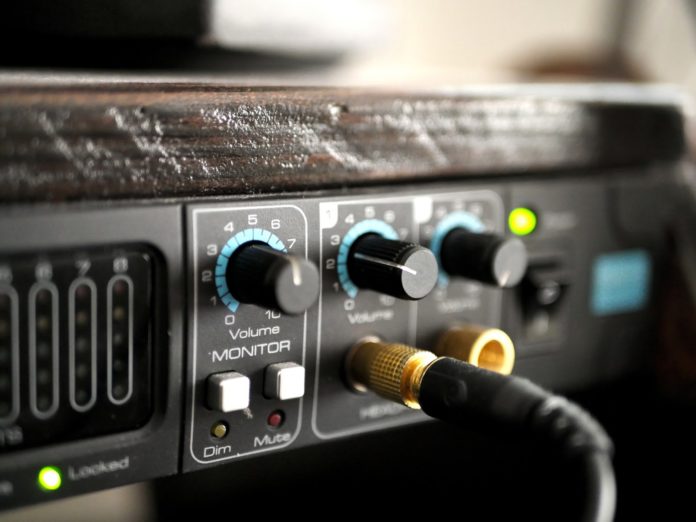
For those of us involved in music production, technology plays a big role in our day to day activities. And as technology progresses, consumers will always strive for the best products, especially in competitive fields like digital audio and music production.
Thunderbolt audio interfaces find their place at the forefront of this niche field of technology. This newer breed of hardware allows musicians and producers to nearly eliminate latency due to the high bandwidth and data transfer rates enabled by the Thunderbolt interface. In this article, we’ll look at 5 of the best Thunderbolt audio interfaces for advanced producers and musicians who have a fair share of digital audio production under their belts.
Benefits of Thunderbolt

Thunderbolt is a digital data transfer interface developed by Apple and Intel. It has gone through several iterations, starting with the original Thunderbolt 1 in the early 2010s. The most recent generation, Thunderbolt 3, is the fastest yet – and we all know faster is better.
If you’ve been involved in audio production for a while, you’ll also know that latency is important for recording. The most modern Thunderbolt interfaces are over 2x faster than USB 3.0 when it comes to data transfer, and 20x faster than USB 2.0.
Thunderbolt audio interfaces are also immune to what we tech junkies call “jitter” which is the term used to describe timing between hardware components that is slightly off. This means that with Thunderbolt interfaces, there is no need to purchase and connect an external word clock. Less is more!
Thunderbolt is also capable of supplying phantom power to high-end condenser mics commonly used for recording audio. Herein lies another advantage over USB interfaces. Thunderbolt can carry 10 watts/18 volts versus the 2.5 watts/ 5 volts that USB 2.0 can supply.
According to synapticsound.com, the higher power supply also means that these interfaces can support higher-quality preamps, amplifiers, converters, and other electrical circuit elements. This adds to the overall sound quality that the best Thunderbolt audio interfaces are capable of. Let’s take a look at some of them.
Universal Audio Arrow 2×4
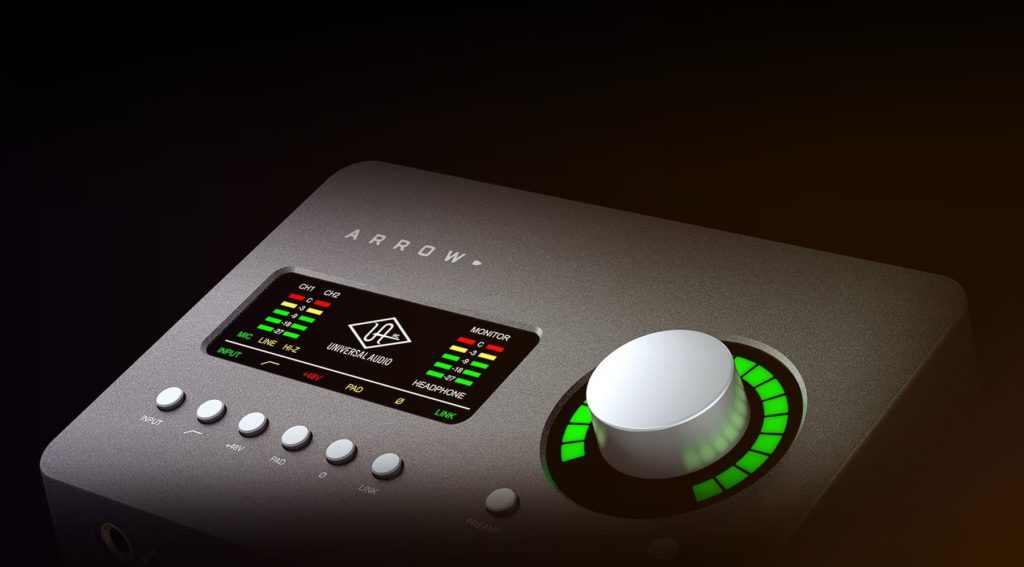
Universal Audio is a household name among recordists and producers, and for some very good reasons. They make some of the best Thunderbolt audio interfaces around! Up first is their new and popular entry-level Arrow interface. The UA Arrow 2×4 utilizes the latest Thunderbolt 3 digital interface, which has a maximum bitrate of 40 Gbit/s.
The Arrow is capable of 24-bit resolution at sample rates up to 192 kHz. It also has two Unison™ mic preamps. These pres are capable of emulating the analog sounds of several types of outboard gear using Universal Audio’s critically acclaimed DSP suite. This powerful, yet small interface is great for musicians or producers who prefer a mobile or compact setup versus a stationary studio. It is a bus powered interface, meaning no external power supply is required.
Specs & I/O
24-bit resolution at up to 192 kHz
2 × Unison™ mic preamps
2 × XLR/1/4″ combo input jacks
2 × 1/4″ main outputs
1 × 1/4″ headphone output
1 × 1/4″ Hi-Z input
Bus-powered
Apogee Element 24
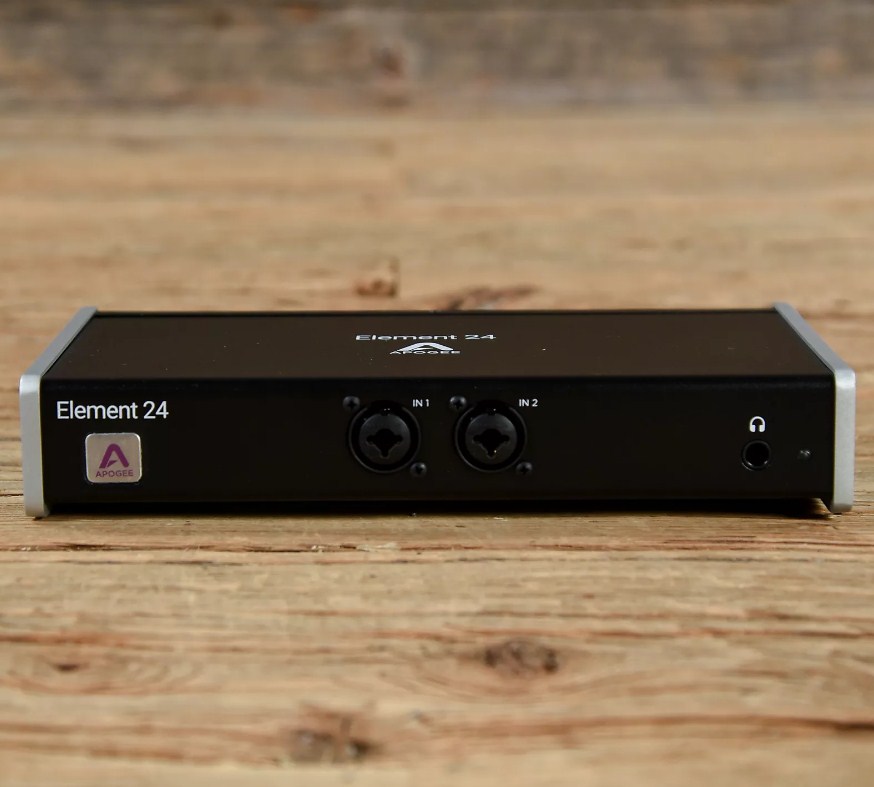
Up next is another excellent Thunderbolt audio interface from Apogee. Do not let the simple looks of the Element 24 fool you – this mid-range Thunderbolt interface is a true performer. Apogee is known for the quality hardware components that they use in their interfaces, and the Element 24 is no exception. The converters, preamps, and headphone amp used in the Element 24 are all top-of-the line components.
Like the UA Arrow mentioned above, Element 24 is built for the solo musician or small home studio market. It is not meant to be the centerpiece of a large, professional recording studio. The two mic preamps will work well for a musician who needs to record two things at once, such as guitar and vocals. It does have a set of digital ADAT/SMUX/SPDIF I/O and BNC word clock I/O to keep things in sync. This helps to expand its connectivity in comparison to the Arrow.
Specs & I/O
24-bit resolution at up to 192 kHz
1.41 ms round-trip latency
2 × mic preamps w/combination inputs
2 × XLR L/R main outputs
1 × 1/4″ headphone output
1 × optical I/O
1 × BNC word clock I/O
Zoom TAC-2R
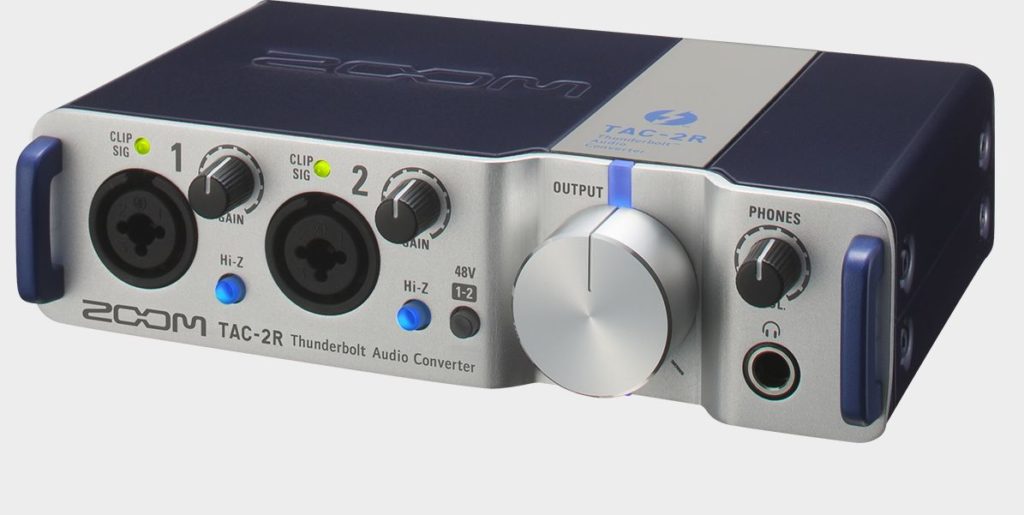
Next up we have the Zoom TAC-2R interface. This one, like the two previous ones, is also directed towards portability with its rugged and compact design. The TAC-2R also features dedicated 5-pin MIDI I/O, something the previous two do not have. Latency figures are pretty impressive, coming in at 4.17 ms round trip at 44.1 kHz with a 64 sample buffer. There is also a direct monitoring switch on the rear panel that toggles between MONO, STEREO and OFF. All things said, the Zoom TAC-2R provides great value for its cost and makes the perfect low-budget interface.
Specs & I/O
24-bit resolution at up to 192 kHz
4.17 ms round-trip latency
2 × mic preamps w/combination inputs
2 × TRS L/R main outputs
1 × 1/4″ headphone output w/level control
1 × 5-pin MIDI I/O
Bus-powered
Universal Audio Apollo Twin MkII
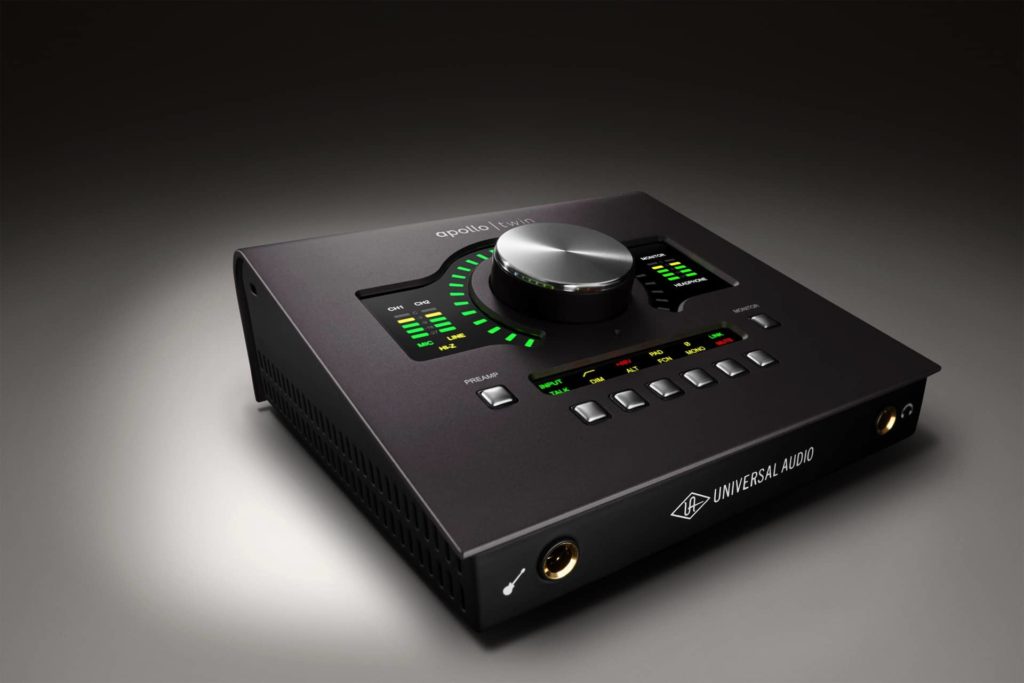
Next up is quite possibly the best Thunderbolt audio interface on this list, the Apollo Twin MkII from Universal Audio. This interface is a step up from the Universal Audio Arrow. The Apollo Twin comes in three varieties – Solo, Duo, and Quad, referring to the number of UAD-2 SHARC processors the interface contains. These processors allow for more DSP firepower.
Like the Arrow, the Apollo Twin is very powerful for its size due to Universal Audio’s UAD powered DSP plugins and the interfaces digitally controlled mic preamps. These plugins are capable of emulating the signature sounds of thousands of dollars worth of analog gear, creating a virtual hardware library in the palm of your hand.
The Apollo Twin has a few key differences in comparison to the Arrow. First, the Twin requires an external power supply, whereas the Arrow is bus powered. The Twin also has expanded I/O capabilities, with an optical input port and additional 1/4″ line outputs – the Arrow only has two 1/4″ main outputs. Overall, you can’t go wrong with the Apollo if you’re looking for an advanced Thunderbolt audio interface.
Specs & I/O
24-bit resolution at up to 192 kHz
sub-2 ms latency times
2 × Unison™ mic pres
2 × XLR/1/4″ combo input jacks
4 × 1/4″ TRS outputs
1 × ADAT optical input
1 × 1/4″ headphone output
1 × 1/4″ Hi-Z input
PreSonus Quantum 2
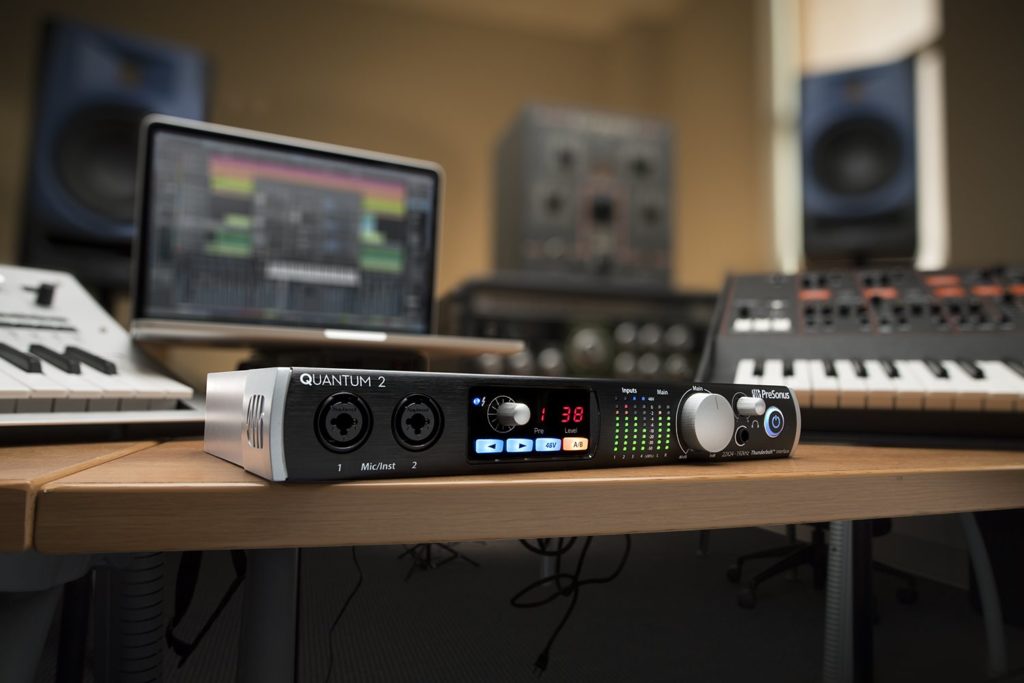
Last but not least it the Quantum 2 from PreSonus. This Thunderbolt interface is perhaps the only one on the list that is capable of supporting a full recording studio setup. It has a total of 22 inputs and 24 outputs. Aside from a moderate amount of I/O, the Quantum 2 excels in the latency department. Since this interface has no onboard DSP, its latency times are the fastest on earth. The Quantum is capable of sub-ms latency times, which, to the human ear, is indiscernible from real-time playback.
The Quantum can also be daisy-chained together with other Quantum units for expanded connectivity and I/O later on, and, like the TAC 2-R, has a dedicated set of 5-pin MIDI I/O. If you’re ready to make the leap into the professional realm of digital audio production, the PreSonus Quantum 2 should be on your shortlist.
Specs & I/O
24-bit resolution at up to 192 kHz
4 × XMAX mic pres
4 × XLR/1/4″ combo input jacks
4 × 1/4″ analog output jacks
1 × S/PDIF I/O
2 × optical ADAT I/O
1 × 1/4″ headphone output
1 × 5-pin MIDI I/O
1 × BNC word clock I/O
















